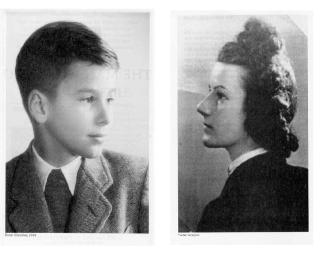Hist 33D, L 16: Literature/Fiction and the
Holocaust
by Prof. Harold Marcuse, Nov. 19, 2002
- Last time: Dachau, 1945-2002
- The demise of the three myths
- Announcements (final exam, next classes)
- Today's question: How is the Holocaust represented in historical literature,
memoirs and fiction (and film)?
"Why write another book about the Holocaust?
- discussion of readings: Wilkomirski, Sobibor, Kluger
Last Lecture: Dachau, 1945-2002
Question: How did Germans "deal with" the Nazi past after 1945?
Answer: Depends on when, and on who.
- 1945-55: The war generation countered the "media blitz" with "three myths"
(victimization, ignorance, resistance).
- 1955-1970: Different (religious) groups fit the Holocaust into their world view, and portrayed it accordingly.
- 1970-present: Later generations challenged the three myths.
The demise of the 3 myths
1970s: end of ignorance
- older generations admit knowledge of crimes
- 1979 TV broadcast of "Holocaust": nail in the coffin
1980s: end of victimization
- recognition of "real" victims; general responsibility
- Reagan & Kohl at Bitburg in 1985=40th anniv. end WW2
- end of divided Germany with unification in 1990
1990s & ongoing: trying to end mythic resistance (resisting the distortion)
"Dialectic of Mythic Resistance"
- original myth: All/most Germans resisted where they could have
- consequence: they resist learning more about crimes
- 68ers declaim lack of resistance to Nazism
- fight (in the present) against perceived "fascist" tendencies;
overeager education
- Stefanie, about teacher in late 1970s (cited in Legacies of Dachau,
p. 313)
"We once had a history teacher. Long hair, beard, ski sweater, jeans—the
works. Boy, did he carry on about everything. For hours he'd talk about the
Jews, the Communists, the Gypsies, the Russians—victims, nothing but victims.
...
Once someone asked him in class: "Tell us, where was the madness? Why did
all those people shout hurrah and Heil? ... There must have been something
to it." He just looked stupid, our dear teacher. He called the boy who'd asked
the question a neo-Nazi, asked him whether he had no respect for the victims,
and so on. ... then he let loose. He screamed at us. Gone was that left-wing
softy of the sixties. All hell broke loose. At last we had broken through
the façade of this all-understanding, all-knowing, all-explaining puppet."
- Example: Oskar Schindler (film 1993)
- (some) Germans did indeed resist!
- (most) Germans did not!!
1968er generation (born 1937-53); in Dachau, Sept. '68
slides in previous lecture
1990s: Differentiation
Punchline: Owning Up
Prof's favorite memorial grafitti
- Bonn--Friesdorf (village war memorial)
- The monument's inscription:
"To our victims of all wars"
- What a sprayer wrote (in 1983):
"To all victims of our wars"
Announcements
- Final exam sign-up: Fri (12/6), Sat, Mon, Tue.
- 2-hour in-class / take-home / oral in groups of 3
- Next 3 classes:
- Wednesday (tomorrow), 5pm
Prof. Ruth Kluger: reading in Campbell Hall
- Thursday in class: discussion with Prof. Kluger
- Tuesday, 11/26: no class, BUT: by 12:15pm
®
Q4 (take-home) due in my office, AND
®
Journals with 8 or 9 entries
- Hist 100H, Winter quarter (Tuesdays, 1-3:50)
- weekly 500-word essay
Today's Questions
Physical remains, art and architecture are one way of representing the Holocaust.
Words are another.
How is the Holocaust represented in works of literature, such as histories and memoirs?
What about works of fiction?
Can writers "use" Holocaust imagery to better reach their audiences and highlight certain aspects and themes?
WHY WRITE ANOTHER BOOK ABOUT THE HOLOCAUST?
 Binjamin
Wilkomirski
Binjamin
Wilkomirski
- A powerful best-seller when first published
- Author discredited: actually Bruno Doesekker, born out of wedlock in Switzerland.
- What does this imply for the book?
The claim that this purported memoir is actually a work of fiction first appeared
on August 27, 1998 in the Swiss weeklyWeltwoche, in an article written
by author Daniel Ganzfried, who researched Wilkomirski's background. Although
the author claims to have been born in Latvia in 1939, and to have arrived in
Switzerland in 1947 or 1948, Swiss legal records show that he was actually born
in Switzerland on February 12, 1941, the son of Yvette Grosjean, who was not
married at that time. Her son was adopted and raised by the Doessekkers, a middle-class
Zurich couple. The story was later reported in The Times of London
(Sept. 8, 1998), and The New York Times (Nov. 3, 1998). On October
14, 1999 the NY Times reported that the German publisher, Suhrkamp Verlag, withdrew
from stores all hardcover copies. Schocken Books suspended publication of the
English edition on November 1, 1999.
Today Doessekker is a very successful classical musician in Switzerland.
For more information, see:
- Philip Gourevitch, "", in The New Yorker
- Elena Lappin, "" in Granta
- Oct. 15,
1999 Guardian article
- Rebecca Abrams has a good discussion of the
"Mistaken identity" phenomenon in the New Statesman.
- Blake Eskin, A Life in Pieces (New York: Norton, 2002).
11
pages on amazon
- Stefan Maechler, The Wilkomirski Affair: A Study in Biographical Truth (New
York: Schocken), 496 pages, $16.95. Commissioned by the Swiss agent who originally
got the manuscript published. See Apr. 30, 2001 review
by Rick Perlstein in the New York Observer (critical), and the June 14,
2001 review
by Dennis Johnson (neutral). 9
sample pages on amazon
- Sue Vice, Holocaust Fiction: From William Styron to Binjamin Wilkomirski
(June 2000). Amazon
Raschke and Blatt on Sobibor
- Was the film "truth" or fiction?
- What liberties did the film take?
- What advantages does Raschke's book offer over the film?
- What about Blatt's memoir?
page created 11/20/02 by H. Marcuse, Friesdorf added 10/28/03; back
to top
 Binjamin
Wilkomirski
Binjamin
Wilkomirski